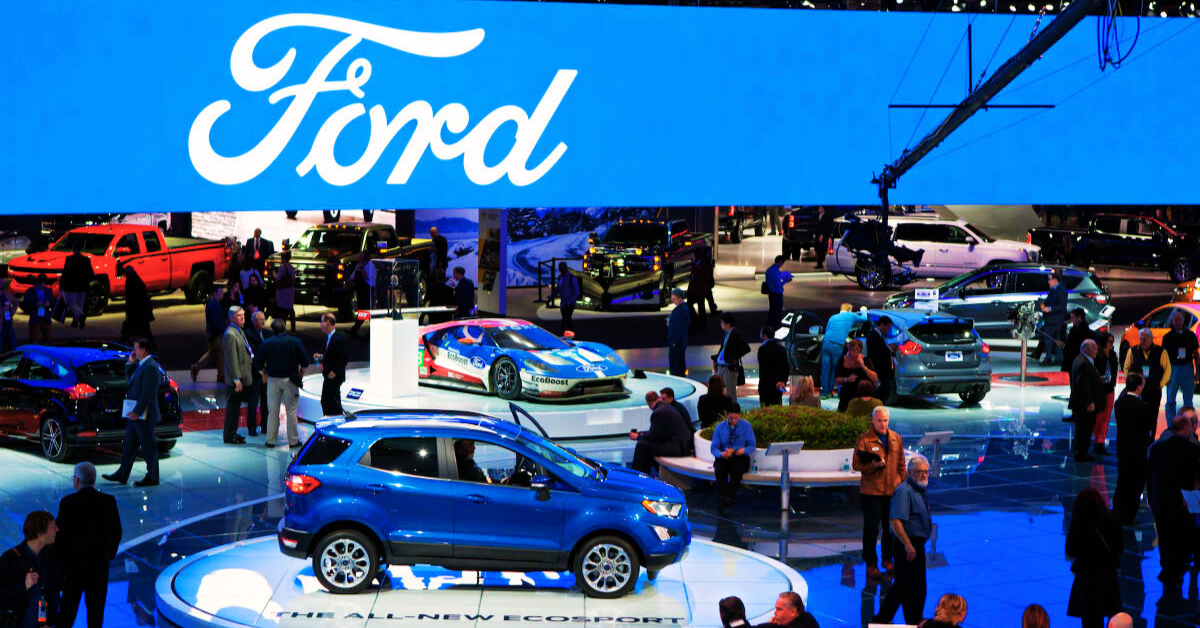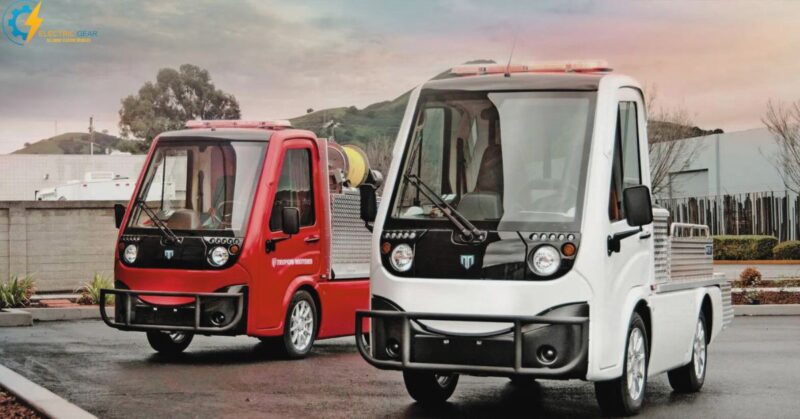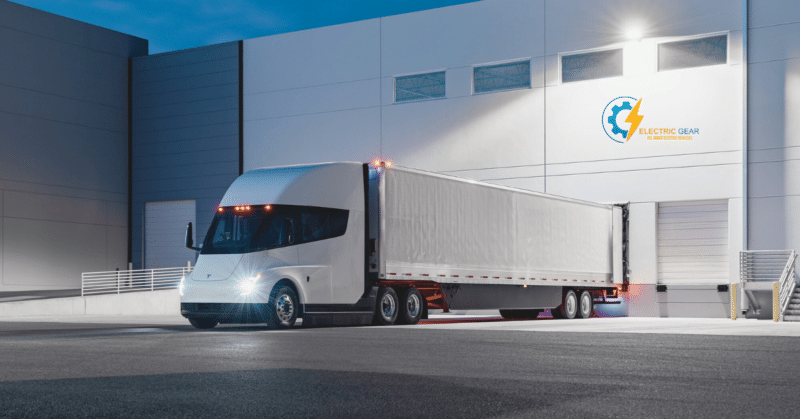Over the past few years, Ford has poured much money into developing EVs (electric vehicles). In 2010, with the introduction of Ford Focus Electric, the business began transitioning to EVs. However, Ford did not commit to a massive increase in EV investment ($4.5 billion by 2020) until 2017.
Ford’s hybrid and plug-in hybrid vehicle lineup is crucial to the Ford electric vehicles (EV) strategy. Thanks to this strategy, Ford can reach out to customers interested in electric vehicles but hesitant to invest in a fully electric vehicle.
Ford has announced plans to release an all-electric version of its best-selling car in the United States, the F-150 pickup truck, in 2020. The business has also released the all-electric Mustang Mach-E, which critics and buyers have praised.
Ford has been putting money into battery research and charging stations to back up its EV plans. In addition to collaborating with established businesses like Electrify America and Greenlots to expand its charging infrastructure, the company is also focused on developing its battery cells.
Strategy of Ford’s EV
The Strategy of Ford’s electric vehicles focuses on creating a diverse lineup of EVs that appeal to buyers’ tastes and lifestyles while mitigating the pollution caused by conventional internal combustion engine cars. Ford Electric Vehicles (EV) Strategy Includes the Following:

- Product Development: The company is committed to the growth of the Ford electric vehicle market and has announced intentions to launch at least 16 Ford electric vehicles by 2022. These models will cover the gamut from sedans to sport utility vehicles to pickup trucks, with something for everyone.
- Battery Technology: Ford also spends money on battery research and development to manufacture its batteries. Batteries are a crucial part of electric vehicles, and this would give the firm more say over their quality and price.
- Charging Infrastructure: Ford is working with independent businesses to expand a national charging station network for electric vehicles. One major issue facing those driving Ford electric vehicles is the need for more convenient charging stations.
- Partnerships: Ford is hastening its electric vehicle (EV) strategy by partnering with other businesses. For instance, they have collaborated with Volkswagen to advance electric vehicle technology.
- Hybrid and Plug-in Hybrid Vehicles: The development of hybrid and plug-in hybrid vehicles, which mix electric and gasoline engines, is another area where Ford maintains its investment. The range and versatility of conventional gasoline-powered cars are combined with the environmental benefits of entirely electric vehicles in these hybrids.
Current Ford Electric Vehicles
Currently, buyers can choose between Ford’s Mustang Mach-E and E-Transit, both electric vehicles.
Ford’s first fully electric SUV, the Mustang Mach-E, has been praised by reviewers and customers alike. It can be charged 80 percent in 45 minutes using a fast charger and has a maximum range of 300 miles. The Mach-E’s performance is as impressive, with the GT version reaching 60 mph in 3.5 seconds.
Ford’s first all-electric commercial van, the E-Transit, aims to reduce commercial operations’ carbon emissions.
The E-Transit can be charged 80 percent in just 34 minutes at a DC Fast Charging station, with a maximum range of 126 miles. It also comes with a wide range of up-fitting choices to meet the varying requirements of different businesses.
Famous Ford’s Electric Models
1- Mustang Mach-E: Features and Performance
The Mustang Mach-E is Ford’s first all-electric SUV, boasting features and impressive performance capabilities. Here are some of the key features and performance highlights of the Mustang Mach-E:
- Range: The Mustang Mach-E has a range of up to 300 miles on a single charge, making it appropriate for longer road trips and daily use.
- Performance: Depending on the configuration, the Mustang Mach-E may reach 60 mph from a standstill in as low as 3.5 seconds. It has an independent rear suspension, either rear-wheel or all-wheel drive to provide a comfortable ride.
- Interior: The Mustang Mach-E has a spacious interior with up to five passengers. It also includes a large touchscreen display, Ford’s SYNC 4 infotainment system, and advanced driver assistance features.
- Charging: The Mustang Mach-E can be charged 80% in as little as 45 minutes using a DC fast charger or 100% in as little as 8.5 hours using a Level 2 charger.
- Styling: With a striking front grille and aesthetic effects from the original Mustang, the Mustang Mach-E has an elegant and contemporary appearance.

2- Ford E-Transit: Features and Performance
- All-electric vehicle: The Ford E-Transit is an all-electric version of Ford’s well-known Transit cargo van that was created to provide a greener method of transportation for businesses. With an electric drivetrain and cutting-edge technology, the car offers effective performance, increased productivity, and reduced running costs.
- Electric powertrain: The Ford E-Transit’s electric engine is one of its most notable characteristics since it eliminates exhaust emissions. That’s why it’s the best option for companies that care about sustainability and want to lessen their negative effect on the planet. The instantaneous torque provided by the electric powertrain makes for a more refined and responsive driving experience.
- Performance: The Ford E-Transit is well suited for urban delivery and last-mile applications because of its performance specs, which include a range of up to 126 miles on a single charge. The car has several high-tech safety features that protect drivers, including a 360-degree camera and pre-collision support with automated emergency braking.
- Features: The Ford E-Transit has several convenient additions that boost efficiency and reduce maintenance expenses. The vehicle’s cargo space can expand to 487.3 cubic feet. It comes standard with connectivity features like FordPass Connect and Ford Telematics that let fleet managers keep tabs on each vehicle’s activity and plan routes and schedules for maximum productivity.

Future of Ford Electric Models
Ford is working on an electric version of the Transit Connect, the E-Transit Cutaway, and the F-150 Lightning. More than 120 thousand people have deposited on Ford’s first wholly electric pickup vehicle, the F-150 Lightning.
It has remarkable towing and payload capacities and a range of up to 300 miles. The E-Transit Cutaway is a commercial van that can be easily modified to suit the demands of any company. The Transit Connect Electric is a small business vehicle perfect for congested city streets.
Conclusion
Ford has made significant strides toward environmentally friendly mobility in recent years. The corporation has made many lofty pledges to reduce its carbon impact, including carbon neutrality by 2050.
Ford wants to have 40% of its worldwide car volume be electric by 2030, and the company has pledged to invest in electric and hybrid vehicles to reach this objective.
Ford has pledged to reduce the environmental effect of its production operations and invest in electric and hybrid cars. Seven of the business’s fourteen worldwide production locations are powered entirely by renewable energy, and the company has committed to making this transition at all of its facilities by 2035.
Ford is also dedicated to helping its suppliers lessen their adverse effects on the environment and become more sustainable.
The corporation has set up a sustainability partnership program to collaborate with its vendors on environmental and social objectives, including reducing greenhouse gas emissions, saving water, and fostering more ethical working conditions.
Frequently Asked Questions
Does Ford manufacture electric vehicles?
Mustang Mach-E, the F-150 Lightning, and the E-Transit are the electric vehicles offered by Ford.
How long does it take to charge a Ford electric vehicle?
The charging method and the size of the battery are the primary factors deciding the charging time of Ford EVs. For example, the battery of Mustang Mach-E is charged from 10% to 80% in just 38 minutes using a DC fast charger.
What is the cost of Ford electric vehicles?
Mustang Mach-E prices range from approximately $42,895 to $47,185 on average, while F-150 Lightning prices start at about $39,974, and E-Transit prices start at about $47,185.
What is the warranty for Ford electric vehicle batteries?
An 8-year or 100,000-mile warranty is offered for Ford Models of Mustang Mach-E and F-150 Lightning models.
What is the towing capacity of Ford electric vehicles?
The F-150 Lightning towing capacity is fixed at 10,000 pounds, while it is 1,500 pounds for the Mustang Mach-E.

Imran is an experienced content writer who crafts engaging and informative articles for a variety of industries. With a keen eye for detail and a passion for storytelling, Imran delivers high-quality content that resonates with readers. Whether he’s writing blog posts, social media content, or website copy, Imran is committed to delivering compelling content that drives results.







